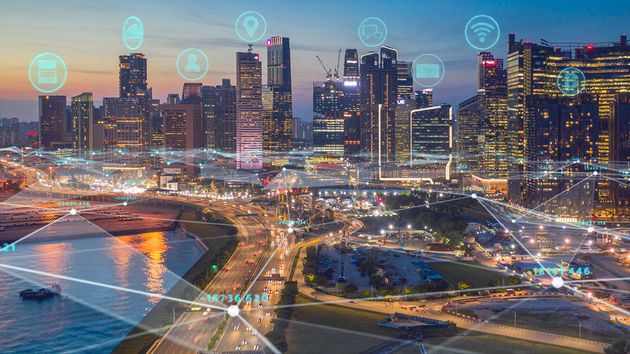Stop talking about smart cities or intelligent cities. The established term is now “connected and sustainable territory” in order to show the importance taken on the subject by local authorities beyond just the metropolises. It is also a question of showing through this name that the digital transformation and the ecological transition are entirely reconcilable.
After the report on “Connected and sustainable territories” by Valérie Nouvel, vice-president of the Manche department, presented in mid-October, an observatory of the same name was launched by the professional federation InfraNum, the Bank of Territories and the FNCCR ( National Federation of Granting and Governing Communities).
Conducted from September to December 2023, this first edition is based on around thirty interviews conducted with 60 communities representative of the French landscape with 5 departments, 13 urban communities or metropolises or 9 urban, peri-urban, rural or mixed areas. .
Informing public policies
What are these communities actually doing with very high-speed infrastructure on their territory? The priority projects highlighted by the observatory have a direct link with the environmental transition since they relate to the energy of buildings (30 projects completed or in progress), public lighting (28), water (26 ), roads and parking (19), waste treatment (19) or mobility (13).
The use of the Internet of Things to make a territory “smart” serves several purposes. The analysis of the data reported should allow elected officials to better understand their territory and its evolution to inform their public policies but also better communicate with users.
More prosaically, digital must also respond to new challenges, new regulations, with constrained budgets.

Raise user awareness about water consumption
The interest of this observatory is to illustrate each of these major use cases through feedback. Tour Métropole Val de Loire thus ensures water management over part of its territory.
To do this, it deployed 300 connected meters and four LoRa antennas (very low-speed network dedicated to IoT) in its hypercenter. With this first conclusive test, the experiment was extended to a thousand meters and scaling up (65,000 meters) is planned.
Among the first gains obtained, we find invoicing carried out on real data and not on the basis of estimates re-evaluated at each index, an improvement in the quality of the relationship with the user and an awareness of the latter on the issues of water sobriety. Tomorrow, it will also be possible to automatically detect leaks.
33% reduction on gas bill
Another metropolis, another use case. Rennes Métropole has taken up building management. 450 sensors were installed for energy monitoring of public buildings. When the project was launched, the community aimed for 15% energy savings. The objective was achieved and even beyond expectations. In certain municipalities, a reduction of 33% on the gas bill has been noted. In the future, a thousand municipal and metropolitan buildings could be affected.
Public lighting also generates a now well-established ROI. With the recent energy crisis, elected officials have understood the benefit of having a fine control system for their lighting fixtures. The energy union Morbihan Energies has massively deployed connected clocks. “ If the municipalities are ready for certain uses (cutoff in the event of network overload), there remains an issue of acculturation for more complex uses (event programming) », tempers the study.
The town of Istres has invested in waste management. It has deployed 55 connected bins powered by solar energy in its city center. The objective is to improve the cleanliness of the area by automatically detecting the filling rate of the bins without impacting the workload of company agents or even freeing up their time for other tasks. It is also possible to close the bins remotely.
Preventing floods
A final issue concerns the management of environmental risks. To prevent flooding during the unfortunately famous Cévennes storms, Montpellier Méditerranée Métropole set up sensors and hydrometeorological stations in 2013 to observe changes in the level of its rivers.
The majority of communities surveyed say they have received subsidies for their projects from the region, the government or the European Union with unequal access depending on the different use cases.
Following Valérie Nouvel’s report, ministers Jean-Noël Barrot and Dominique Faure, in charge of digital technology and local authorities and rurality respectively, were to present, in December, a roadmap on the development of connected and sustainable territories. She is always expected.
